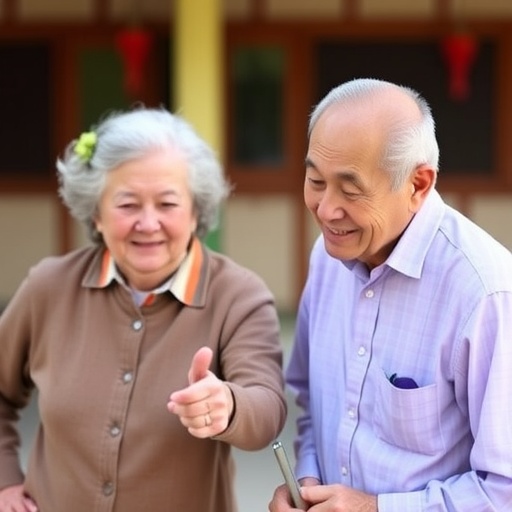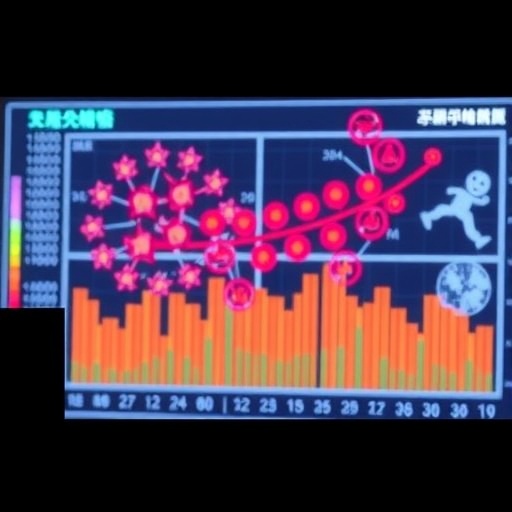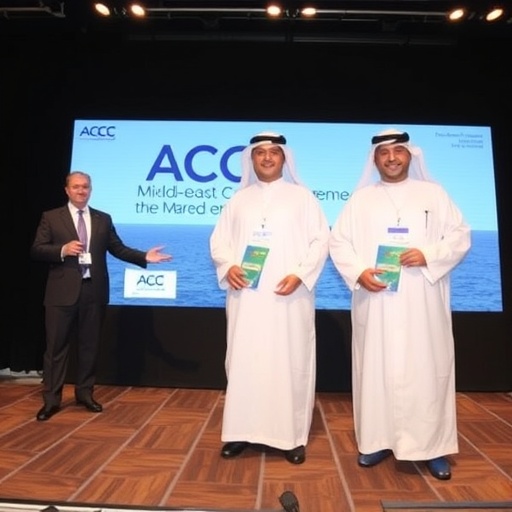In recent years, research has increasingly highlighted the crucial link between physical activity and health outcomes in aging populations. A groundbreaking study conducted by Li, Guan, and Wang sheds light on this relationship specifically within the elderly Chinese demographic. The findings, which appeared in the peer-reviewed journal BMC Geriatrics, showcase how varying levels of physical activity correspond to frailty indexes among older adults in China. This research is not just another addition to the scientific literature; it represents a significant step in understanding the complexities of aging and the pivotal role lifestyle choices play in the well-being of the senior population.
The study utilizes data collected from the China Health and Retirement Longitudinal Study (CHARLS), a robust longitudinal survey that provides a comprehensive overview of the health conditions, economic status, and social networks of individuals aged 45 and older in China. As the world grapples with an increasing elderly population, understanding the factors that contribute to frailty—characterized by reduced physiological reserve and increased vulnerability to adverse health outcomes—becomes paramount. The study’s findings give clear evidence of how physical activity can mitigate some of the effects associated with aging and frailty.
Central to the conclusions drawn in the research is the frailty index, a metric that assesses the health status of older adults. This index accumulates multiple health deficits, which, when considered together, provide a more accurate depiction of an individual’s health than any single disease or condition could offer. Li and colleagues meticulously analyzed how varying degrees of physical activity could influence this frailty index. The results were striking—a clear negative correlation was found, indicating that higher physical activity levels significantly reduce frailty among older individuals.
The implications of these findings are manifold. Not only do they suggest that increasing physical activity can serve as a preventive measure against frailty, but they also highlight a vital area for public health interventions. With an aging population becoming a major global issue, strategies promoting physical activity among older adults could combat the impending public health crisis associated with frailty and its related complications. Governments and health organizations must take heed of this evidence, integrating physical activity programs into their policies aimed at elder care.
However, the study also raises critical questions about the type and intensity of physical activity most beneficial for older adults. Li, Guan, and Wang detailed their research methodologies with rigorous statistical analyses, allowing them to differentiate the effects of light, moderate, and vigorous physical activities. Their findings revealed that even small increases in physical activity—such as regular walking or light calisthenics—were associated with better health outcomes. This detail underscores that accessibility and sustainability of physical activity is essential, especially for populations who may struggle with more intensive forms of exercise.
Furthermore, the study reaffirms the importance of community and social support systems in fostering environments conducive to physical activity for older adults. A significant component of CHARLS is the social networks of the elderly participants. The mutual encouragement among peers and family can be a powerful motivator for seniors to remain physically active. This suggests that public health initiatives should not only focus on creating exercise programs but also on enhancing social engagement to foster a supportive atmosphere for the elderly.
The research stands as a powerful reminder of the agency that older adults can maintain in managing their health. Addressing and ameliorating frailty through increasing physical activity empowers seniors to take control of their health transitions as they age. This empowerment can lead to improved quality of life, greater independence, and reduced healthcare costs associated with frailty-related conditions. It becomes clear that fostering an active lifestyle among the elderly is not merely a health recommendation but rather a prerequisite for aging successfully in the modern world.
Additionally, the implications extend beyond just individual health; they encompass economic considerations as well. With healthcare systems projected to be increasingly burdened by the rising costs associated with an aging population, preventative measures via promoting active lifestyles among the elderly could significantly ease these projected expenses. By investing in physical activity programs and infrastructure that supports senior fitness, governments may find not only healthier aging populations but reduced financial burdens on the health systems.
As the scientific community continues to unravel the connections between lifestyle factors and health outcomes, studies like that of Li, Guan, and Wang provide crucial evidence that can shape future research agendas. Further exploration in this area is necessary, particularly regarding longitudinal outcomes and how best to implement lifestyle interventions. As we aim to create a thriving environment for our seniors, the implications of physical activity as a cornerstone for healthy aging should resonate across disciplines and sectors.
The nuances of culture and environment also play a pivotal role in the adoption of physical activities among older adults. The obligative adherence to family and societal norms within China may affect how physical activity is integrated into daily life. Understanding these cultural dynamics is imperative for crafting effective community programs. Future research must delve deeper into culturally tailored interventions that align with the specific needs and preferences of the elderly population.
As the findings from the CHARLS survey circulate, it is vital that researchers, policymakers, and community leaders come together in dialogue to leverage this knowledge effectively. The elderly demographic not only deserves choices that reflect their health aspirations but also the resources necessary to realize those aspirations. Collaboration among stakeholders can propel the movement toward a culture of active aging, where the frailty index can be treated not as a foregone conclusion but as a modifiable risk factor.
In conclusion, the work of Li, Guan, and Wang spurs essential conversations in the realm of gerontology, public health, and social policy. The clear association between physical activity levels and frailty among elderly Chinese presents an urgent call to action. By emphasizing the necessity for physical activity as a tool for mitigating frailty, this study adds to a body of evidence that champions healthier and more active lifestyles for the older population, shaping a future where aging can be a time of vitality and engagement rather than decline.
Subject of Research: The association of physical activity levels with the frailty index in elderly Chinese.
Article Title: Association of physical activity levels with frailty index in elderly Chinese: evidence from the China health and retirement longitudinal study (CHARLS).
Article References:
Li, Q., Guan, J. & Wang, R. Association of physical activity levels with frailty index in elderly Chinese: evidence from the China health and retirement longitudinal study (CHARLS).
BMC Geriatr 25, 762 (2025). https://doi.org/10.1186/s12877-025-06334-5
Image Credits: AI Generated
DOI:
Keywords: Physical activity, frailty index, elderly health, aging population, public health, CHARLS.
Tags: China Health and Retirement Longitudinal Studyfrailty in elderly Chinese adultsfrailty index and physical activitygeriatric health research in Chinahealth outcomes in aging populationsimpact of exercise on health in older adultslifestyle choices and senior well-beinglongitudinal studies on elder healthphysical activity and agingpreventive measures for elderly frailtyrelationship between exercise and frailtyvulnerabilities in aging populations





